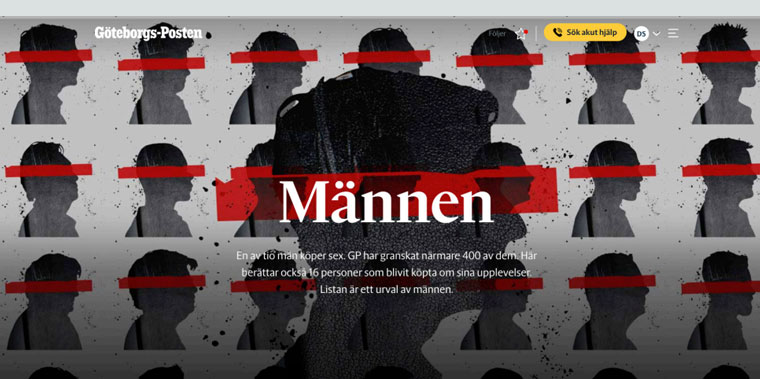Göteborgs-Posten attracts female audience with true crime podcast
Ideas Blog | 07 March 2022
Not all women are created equally; not all follow the Kardashians or are obsessed with fashion. Instead, some follow true crime podcasts and are obsessed with hunting down criminals and becoming a voice for the victims. Göteborgs-Posten in Sweden used the popularity of true crime podcasts to grow its audience of younger women. And like every good true crime story, it had a twist.
Michael Verdicchio, an investigative reporter for GP, was working on a story about young girls being sold into prostitution. He and GP wanted to reach an audience outside of its typical readers and subscribers. He spoke with several victims who told him prositution isn’t typically talked about from the perspective of young people, despite the average age of a person being sold for sex in Sweden is 14.

Some of the girls said they wanted to hear from other victims who have gone through the same situation as them. This feedback was the catalyst for GP leaving its traditional platform and launching the podcast, Systrar, which means “sisters.”
Stories that matter
It was important to GP to avoid the cliche of attracting young female audiences with entertainment and lifestyle journalism. They knew they were on the right track with Systrar when they collected data that found women under 35 are an overrepresented group who listen to true crime podcasts. When they checked with the competition, they found most true crime podcasts focused on high-profile crime cases. Their approach would be different.
Systrar is a podcast where real victims tell their stories in their own voices. To stay completely on brand of making it personal, GP asked the victims to choose the music for their own episode. In addition to being an investigative journalist, Verdicchio has a background in radio, so he was perfectly suited for the new venture.

Once they had the concept for the podcasts and had created compelling episodes, GP had to decide the best way to utilise this content to build long-term relationships with its new audience and turn them into subscribers. After all, the podcast launched on several different sites for free.
Between the content and the way the stories were being told, GP says the episodes created a visceral reaction for listeners and they were left wanting more. For listeners to get extra content, they had to go to GP’s Web site and subscribe. Instead of putting the content behind a paywall, GP created a special site for the bonus material.
With the help of 16 victims, GP was able to map 400 people who bought sex in the Gothenburg area. GP created a gallery of sex-buying men and included detailed information about them. This included their ages, jobs, and physical descriptions. GP also created a map of places where the victims said sex was bought. This included hotels, stores, and homes in the suburbs. When a new episode would air, GP would post pictures from the victims’ own cell phones and material from trials.

Monetising a movement
To move listeners from the free sites where they were listening, GP created highly engaging teasers during episodes. GP highlighted specific value like certain pictures and asked listeners to go to the Web site to see them for themselves.
Marketing was a huge help in GP’s endeavour. They placed trailers in social media and launched an advertising campaign on the side of Gothenburg’s tram system. This allowed them to quickly gain credibility on sites like iTunes and prominent influencers started creating buzz.
People listened to Systrar more than 600,000 times and GP gained about 1,000 new subscribers. Of those new subscribers, 69% were women and 68% of them were women under 35. The number of young female subscribers grew 60% from 3,700 at the end of 2019 to 5,800 at the end of 2020.
GP proudly mentions feedback from the project showed women believed the stigma around prostitution began to lift and their investigation is now used as educational material in women’s shelters and schools.































